Christian Dior is one of the most iconic names in fashion — so iconic that even those with zero fashion sense have heard of him. His most popular line is arguably the equally famous Miss Dior, and while everyone’s heard of the floral perfume, not everyone knows that there was a very real Miss Dior — and her first name was Catherine.
The perfume was launched in 1947, and when Christian Dior wrote his autobiography just a few years later, he said the name came to him in a moment of inspiration, when he heard his mentor greet his sister with the words, “Voila, Miss Dior!” In a way, it was a fitting honor. Catherine was, by all accounts, one of her brother’s biggest supporters.
But on the other hand, she was perhaps the last person one might think would lend their name to a perfume. Her contemporaries knew her more for her unconventional nature and, when push came to shove, her fighting spirit. She was born in 1917, and as a young woman living in France during World War Two, well, that fight and determination served her well. By the time the war came to a close, she would become a highly decorated member of the French Resistance, even though she would spend those final, dark days as a prisoner in a concentration camp.
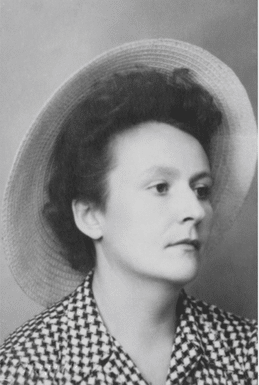
A garden of peace before the horrors of war
The lives and work of both Christian Dior and his sister would have one consistent theme: a love of flowers and gardening garnered from their mother, Madelaine. The family’s early years were peaceful, idyllic, even. The Dior patriarch had provided well for his growing family, accumulating a certain amount of wealth as a producer of fertilizer. They were well-off enough to keep more than one home, but the one they remembered most fondly was a family home called Villa Les Rhumbs in Granville, a beautiful seaside resort town in Normandy.
That was just a second home by the time Catherine was born in 1917, and for most of the time, the family lived in Paris. Still, the young Dior siblings had their childhood shaped by the extensive gardens and flowers they remembered their mother patiently growing and cultivating, an influence that would become evident in later years.
Not all good things seem to last, though, and it was certainly true for the Diors. Christian, in particular, was of a superstitious nature, and would later recall the very instant the tide of their lives changes: the moment that a mirror fell to the floor in their empty house, and shattered.
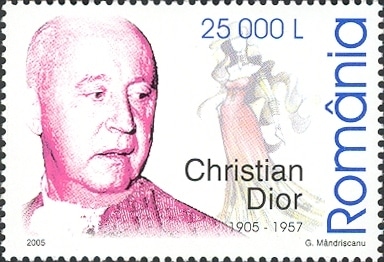
“Misfortune came into our hitherto happy and sheltered family immediately,” he would write.
One of their brothers grew ill, and their mother “suddenly faded away and died of grief,” Christian would remember. Brother Bernard would be committed to an institution, where he would live until his death in 1960, and suddenly, the wealth they had long enjoyed was gone. The Dior patriarch lost everything in the Stock Market Crash of 1929, Christian’s modernist art gallery went bankrupt, and he was diagnosed with tuberculosis. Amidst it all, he found himself caring for his siblings — including his favorite, Catherine.
The family moved to a small piece of property in Callian, an area appropriately well-known for growing the flowers that supply France’s perfume industry. It was there that Christian began to draw, selling his sketches to help support his family and finally heading to Paris to enter the design world for the first time. Catherine followed him in 1936, and worked at a nearby boutique. It was their first foray into the adult world, into the realm of Parisian fashion and industry. But again, the good times were not to last.
War was lingering on the edge of everyone’s minds, and by 1939, businesses were closing as people prepared for what they knew was inevitable conflict. Christian was conscripted into the military, and Catherine returned to her father and Callian. Her brother joined them fairly quickly after he was demobilized in 1940, and here again their lives intertwine. They grew vegetables, helped supplement the meagerness of wartime supplies, and made regular excursions into Cannes, where they were kept apprised of all that was going on in the war..
They were on the outskirts of the conflict, but they would not stay there for long.
French Resistance, a chance meeting, and a married man
On June 14, 1940, the day that so many Parisian businesses had been preparing for finally happened. Suddenly, the city was under a strict 8pm curfew, and German troops were announcing their official occupation. An estimated 2 million people had already left ahead of the impending invasion, and for those that remained, life was… complicated. Parisians needed to find a way to co-exist with their occupiers, and some — like Paris’s other world-famous fashion designer, Coco Chanel — decided the best way to get through the war was to collaborate with the German military. She dated a high-ranking member of the Abwehr, moved into the Paris Hotel Ritz, and was given her own code name even as she used the ongoing persecution of the Jews to renegotiate some business deals.
Catherine and Christian Dior did the opposite.
In 1941, Christian headed back to Paris, leaving his sister at Callian. He secured a position at the fashion house of Lucien Lelong, and Lelong did an incredible thing. Even as Nazi officers informed him they were going to be moving all of Paris’s fashion industry to Berlin, Lelong first argued that it just wasn’t possible to move the thousands of skilled artisans to another city. You couldn’t retrain them, either, as it took decades to become as skillful as his employees were. So, he argued… fashion needed to stay in Paris. Germany relented, the fashion industry remained in Paris, and Lelong saved thousands of industry workers — many of whom were Jewish refugees.
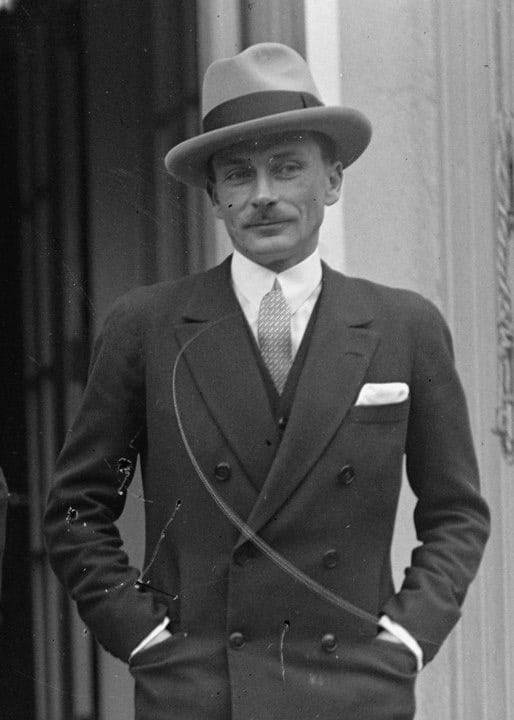
Even as Christian established himself in the industry as one of Lelong’s most valued employees, Catherine was back in Callian. It was the same year she did a seemingly innocuous thing that would change her life. It was November of 1941 and she went shopping for a radio in a store in Cannes.
It was on that perfectly ordinary shopping trip that she met a man she would fall in love with. His name was Herve des Charbonneries, and he came with, well, some baggage. He was married at the time, to the mother of his three children. Lucie — who was rumored to have had plenty of affairs of her own — didn’t matter, though, not when it came to the blossoming love between Herve and the young Catherine. It was more than a simple wartime fling, though: he and Catherine didn’t just fall in love, they joined a British-sponsored section of the French Resistance.
It was called the Famille, or F2, and it was cooperative intelligence network that had been set up by French and Polish intelligence officers in the summer of 1940, with some help from the British. She officially joined on July 1, 1943, just a few months after Lucie. It was dangerous work — it was the first branch of the French Resistance devoted to gathering intelligence, and they were doing it under the nose of a Vichy government so sympathetic to the Nazi cause of extermination that they didn’t just comply with the Nazis — they went above and beyond to identify members of their Jewish population.
Catherine became an intelligence agent with the Massif Central unit; most of her work was gathering and passing along information on the movement of Germany’s troops and weapons. Reports were sent to London, to the Allies, and to the troops who were under the command of General De Gaulle; Catherine, now 29 years old but looking a decade younger, spent much of her time of her bicycle, attracting the sort of attention a pretty young girl riding along through the French countryside would tend to get from the men she cycled past.
It was a nearly ideal cover, and it allowed her to travel throughout the area fairly freely. When she was in Paris, she would often stay with her brother at his apartment, and even as close as they were, it’s unclear whether or not she ever told him what she was doing. It was, after all, the sort of thing he was better off not knowing about — especially considering he spent his days designing dresses for the wives of the Third Reich. Safety was, of course, first and foremost, and if she didn’t tell him, it was a secret she kept to protect him.
The stakes were high, and to say what she was doing was a matter of life and death is no exaggeration. In later memoirs, Catherine would remember one day in particular that she met a friend — and fellow resistance member — Liliane Dietlin at a cafe. She hopped off her bike and hugged her friend, tightly enough that Dietlin remembered that moment even 35 years later. She asked Catherine about it, and Catherine remembered, too. She had delivered four messages that day, three in the morning and one in the afternoon. Eight people had been arrested. Most would be tortured, and all would be executed. When asked if there were many days like that, she responded with a sad shrug and simply said, “Ah, oui.”
It wasn’t just the enemy they knew about, either. By the middle of 1944, counter-intelligence officers loyal to the Germans and to the Vichy government had infiltrated F2. Suddenly, no one could be trusted. Hundreds of French Resistance agents were arrested, torture was common, and Catherine would have seen the bodies of her allies recovered from where they had been dumped in the streets.
July was a particularly bad month. Dozens of agents were arrested, including Jean Desbordes., who went by the code name Duroc. He was taken on July 5, and held for four days of torture before his body was recovered. He had been beaten to death, his eyes torn from his head.
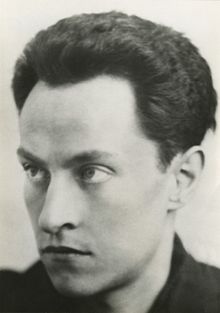
Catherine was arrested on July 6.
From haute couture to concentration camp
When she showed up in Trocadero Square, she thought she was keeping an appointment she’d made with a colleague in the resistance network. Instead, she was met by police under the direction of a German French Foreign Legion veteran named Friedrich Berger. Berger had set up a base for his operations in a wealthy Parisian neighborhood, and his unit of intelligence officers were known for such brutal torture that Allied officers estimated that the longest their most hardened, well-trained operatives could hold out was 24 hours. Catherine was in custody for several weeks, and when other prisoners were asked what had happened behind the closed doors at 180 Rue de le Pompe, they said that she never broke.
Berger’s unit was so efficient at uncovering French Resistance members that it wasn’t long before Catherine needed to be moved to another secure holding facility to await transport to her final destination. On July 27, she was taken to the nearby Fresnes prison — and this is a case of a few days making all the difference in the world. Berger and his men would flee Paris on August 17, and before they left, they shot and killed the 44 prisoners they were holding.
Christian, meanwhile, heard about his sister’s arrest. Even with the contacts he’d made through the fashion house, he wasn’t able to get anyone to help secure her release… until it was too late. On August 15 — just 10 days before the liberation of Paris — Catherine was forced onto a hot, overcrowded train with more than 600 other women. Their final destination was Germany, and in this case, time was not on her side. Christian had succeeded in getting through to the Swedish Consul General located in Paris, and they were willing to speak to the Germans on her behalf. Raoul Nordling had already made some impressive strides: he had already convinced German authorities not to carry out Hitler’s orders to destroy the city, and he had secured the transfer of political prisoners into Swedish custody.
And Catherine Dior was very nearly included in that deal. She was on the train, carrying a suffocating stench of death that was so strong, the guards riding on the roof couldn’t stand it. Nordling got permission to get her off the train, as long as he could get a phone call through to the SS officers when they stopped at the station in Bar-le-Duc.
He couldn’t get through, and the train kept going. Catherine was routed to Ravensbruck, where she was examined, her head was shaved, she was tattooed with the number 57183RA, and given a uniform with the inverted red triangle that denoted her as a political prisoner.
The waking nightmare of Ravensbruck
Catherine never freely spoke of her time in the custody of the Nazis, and it’s not surprising. The atrocities of Ravensbruck perhaps aren’t as well-known as those of camps like Auschwitz — a sad fact that historians say is a result of the camp’s location in what became East Germany, as well as the fact that it was for women, and not nearly as well-publicized when it was liberated. But it was no less horrible. More than 130,000 people were sent to the camp, according to best estimates, and surprisingly, only about 26,000 were Jewish. Others were political prisoners like Catherine, some were academics deemed too dangerous to be allowed to speak freely, and some were simply sent there for not conforming to the Nazi ideals of race and feminity.
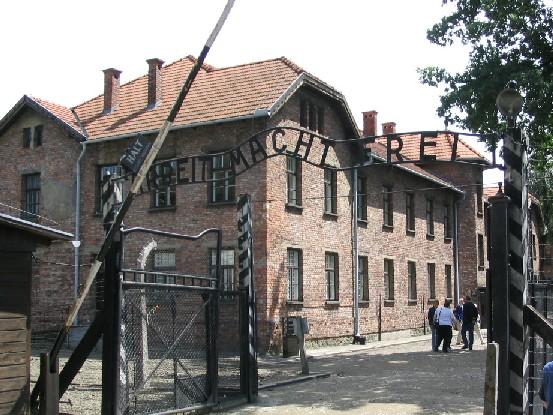
Ravensbruck was a work camp, and historians do know that Catherine worked at a number of nearby factories that relied on slave labor sourced from the camps. She made explosives at Torgau, was forced to labor in a Prussian salt mine, and worked at a factory building parts for aircraft. And she was also part of a group that attempted to sabotage production in those facilities.
It’s unclear whether or not her subterfuge was ever discovered, but sabotage was common enough that there was a standard punishment for anyone caught doing it. They were sent to the Bunker, a series of dark and suffocating cells where troublemakers would be left to languish away in solitary confinement… after the beatings and whippings, which had been approved by Heinrich Himmler himself. Those that were dishing out the punishments were very good at it — Ravensbruck was the training facility for the female guards of the Nazi war machine, and some of the most notorious women of the Third Reich got their start there. Irma Grese, later named the Hyena of Auschwitz, was already gone by the time Catherine arrived, but Dorothea Binz — who would later stand trial for crimes like murder and setting her dogs on the prisoners — was still there.
Conditions were dismal. Catherine was just another one of countless women who were given nothing but rags to wear, offered nowhere near enough to eat, and, as the blizzards and bitter cold winds of winter descended, it quickly became clear that the dangerous conditions of the factories and their disease-ridden lodgings were not the only dangers they faced. Outbreaks of tuberculosis and dysentery were common, and so were the medical experiments. Polish prisoners were known as “rabbits,” and were often maimed to simulate battlefield injuries. Most didn’t survive.
A gas chamber was built there in February of 1945, and thousands had already died there by April. An adjacent camp, Uckermark, was built for the old, the ill, the weak, and as an execution grounds for those found guilty of espionage. Catherine, however, was already gone by the time her fellow prisoners began to be sent to the gas chambers.
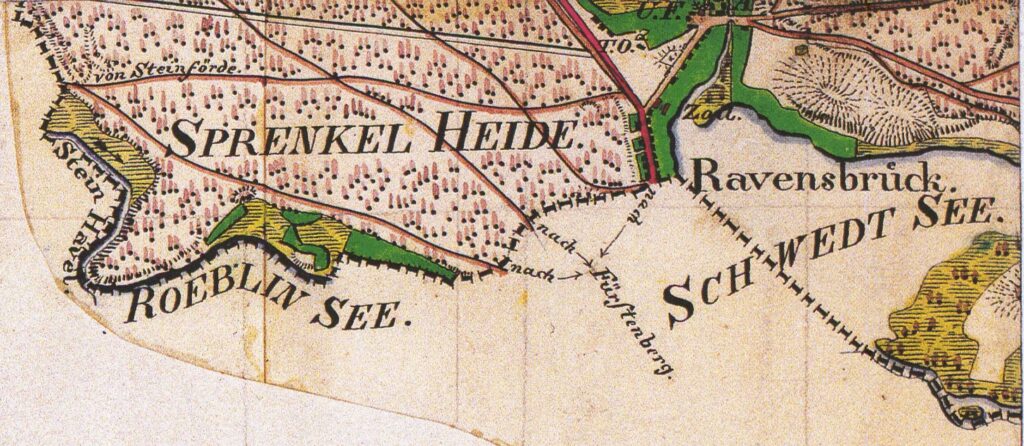
She and a small group of French prisoners were transferred out of Ravensbruck in February of 1945. They were herded onto freezing cattle trucks, and stayed there — with no heat, no food, and no water — for several days until they reached Markkleeberg. There, they found they were going to be subjected to an all new sort of hell — hard, outdoor work in temperatures that dipped well below freezing.
She stayed there for months until new orders were handed down on Friday, the 13th of April, 1945. It was just weeks before Ravensbruck would be liberated by a Soviet army who would find just around 3,500 prisoners still at the camp. The others were all dead or — like Catherine — told to start walking.
They were under the watchful eye of SS officers who had simple instructions: shoot anyone who tried to escape. So they walked… and around 115 kilometers — or about 70 miles — later they came to the city of Dresden. It lay in ruins; it had been the target of Allied bombers only a few months before, and even today, no one is sure of the death toll. Anywhere from 35,000 to 135,000 people were dead, and the city that had once been called “the Florence of the Elbe” had been all but destroyed by thousands of tons of bombs and incendiaries that had set off a firestorm that engulfed military targets, railways, museums, and civilian homes with equal enthusiasm.
Walking into the smoldering ruins of a city that had once been one of Europe’s most beautiful destinations had to be heartbreaking. But still, Catherine somehow managed to slip away from the group, take shelter among the ruins, and hide until the SS had marched away.
On April 19 — a week after she had been marched out of Markkleeberg — she was found by a group of American soldiers. She was still near the bombed-out ruins of Dresden, and when they took her to a hospital for care, she would be there for the next month. Meanwhile, Christian had gotten word that her name had been discovered on a list of concentration camp prisoners, but it wasn’t clear where she was, if she had been among those liberated… or if she had been among the dead.
In an odd twist, he received that message on April 19 as well. For weeks, the only assurances he had that he would once again see his beloved sister came from the clairvoyant he regularly consulted. Madame Delahaye had been unwavering in her insistence that Catherine would return from Germany, and it wasn’t until May 27 that he got another message — one that said she was, indeed, coming home.
Homecoming… and immortalization
Catherine was back home in Paris the day after her brother got the message telling him that she was alive, and she was one of many on a train of refugees bound for Paris. She was a shadow of her former self, emaciated, unable to eat solid foods, and suffering from what we now call PTSD.
She wasn’t just reunited with her brother — also waiting to greet her was Herve de Charbonneries and his children; based on the accounts of friends, they put their lives back together, built a family of their own, and Catherine was allowed to live on in something they described as “relative peace.” While she rarely talked about what she went through during her imprisonment, she did testify at a military tribunal in 1952 and as a strange sort of footnote to that, Friedrich Berger didn’t stand trial for his actions in breaking up the French Resistance by torture and murder. He had been captured by British forces, was eventually handed over to the Americans, and went on to work with the secret service.
As for Catherine, her work in the Resistance and her bravery in the face of torture was recognized. She was awarded a slew of medals, including the Croix de Guerre, the Combatant Volunteer Cross of the Resistance, the Combatant Cross, and — from Britain — the King’s Medal for Courage in the Cause of Freedom. She was also named a chevaliere of the Legion d’Honneur, and, of course, Christian would name his first perfume for her just two years after her return to Paris.
And, she stayed busy. She became a representative in cut flowers and for more than a decade, she and Herve would arrive at the Hallas market at 4am to set up their display of cut flowers brought into the City of Lights from all over the world. She and Herve lived together until his death in 1985, and for years, she faithfully attended an annual memorial service for members of the French Resistance.
Even throughout her later years, she remained steadfast in her support for the cause she had nearly given her life for: She publically distanced herself from the more controversial members of her family, including her niece Francoise, who just as publically declared herself a neo-Nazi when she married British extremist leader Colin Jordan in a ceremony that involved a copy of Hitler’s Mein Kampf.
Christian Dior died in 1957, and afterwards, Herve and Catherine moved back to Callian, where it had all started. She grew roses destined for inclusion in the perfume her brother had named for her, and went on to help establish the Dior Museum in the Granville home they had grown up in.
She never returned to Germany, and passed away in 2008.

